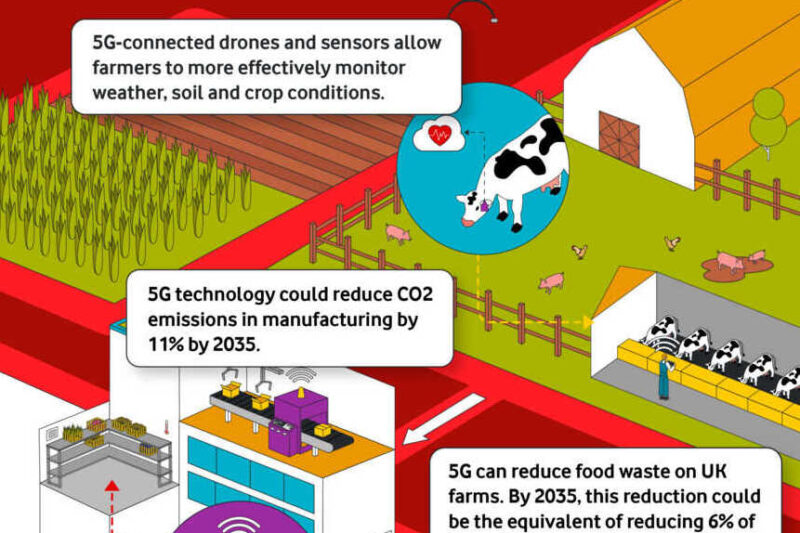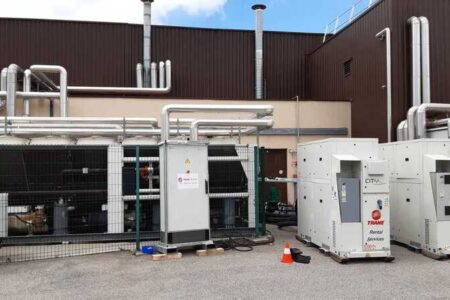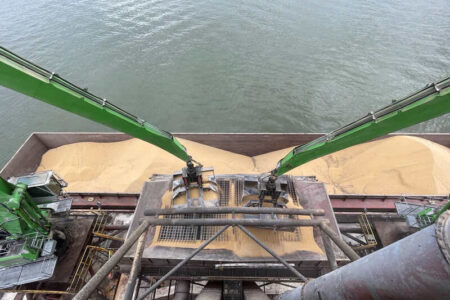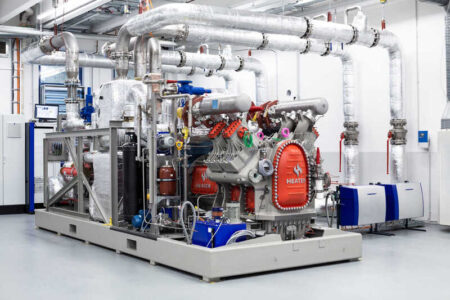Research suggests 5G technologies could transform ‘Farm to Fork’ journey

5G-technologies could deliver significant carbon savings across food and drink manufacturing from farm to fork, according to new economic modelling.
The modelling reinforces the environmental benefits of 5G Standalone (5G SA), particularly for key industries in the UK that are traditionally carbon intensive like manufacturing.
Technologies like Internet of Things (IoT) sensors and tracking systems can transform the way we manage food and drink across the manufacturing supply chain – from its origins on the farm, through to factory production sites and transporting the food on UK roads to stores.
The new modelling reveals that 5G technologies could save the food and drink supply chain 37 million tonnes of CO2e equivalent emissions between 2024 and 2035. That’s the same as removing 78,000 delivery trucks from UK roads. Delivery trucks refers to heavy goods vehicles (HGVs).
However, these efficiencies can only be achieved with the timely rollout of a 5G SA network. That is why, following completion of the proposed joint venture, Vodafone UK and Three UK have committed to investing £11 billion in the first 10 years as a combined business which will help deliver 99% of 5G Standalone population coverage by 2034.
The modelling conducted by WPI Economics for Vodafone reveals the impact that these technologies can have on decarbonising the supply chain.
- In farming, 5G technologies, such as drones and sensors that monitor soil and crop conditions could improve yields and significantly reduce the food waste produced on farms. By 2035, this reduction in food waste can correspond to a total saving of carbon emissions equivalent to 6% of the UK’s greenhouse gas emissions in 2022.
- On the factory line, 5G-enabled manufacturing technologies like remote maintenance systems, which reduce machine downtime, plus IoT tracking systems, which reduce electricity consumption required for cooling and storing goods, could all contribute to an 11% reduction in CO2e emissions in manufacturing by 2035.
- When transporting goods by road, implementing 5G technologies, such as Vehicle-to-Everything to improve the fuel efficiency of HGVs, in the commercial distribution of food and drink could reduce HGV emissions by up to 54 MtCO2e. This equates to more than double the total UK HGV emissions of 2021.
Andrea Dona, chief network officer, Vodafone UK, said: “At Vodafone, we’re supporting many customers across the farm to fork supply chain to become more energy efficient through innovative technology like IoT and the Cloud. But we need the proper infrastructure to take it to the next level.
5G Standalone has the potential to transform the UK supply chain, smoothing operations for suppliers and reducing carbon emissions. Vodafone’s proposed combination with Three UK will enable us to invest £11bn over the next decade, reaching over 99% of the UK population with 5G Standalone by 2034 and helping the UK’s agricultural industry decarbonise sooner rather than later.”
A spokesperson from the Road Haulage Association (RHA), said: “This year, the RHA launched the Net Zero forum which seeks to collaborate with other leading business voices for sharing best practices, technological advancements, and cutting-edge research related to sustainable transport, and we look forward to continuing to support our members by identifying new technology which will support them to decarbonise.”
In June, Vodafone launched the UK’s first Standalone network, 5G Ultra.



